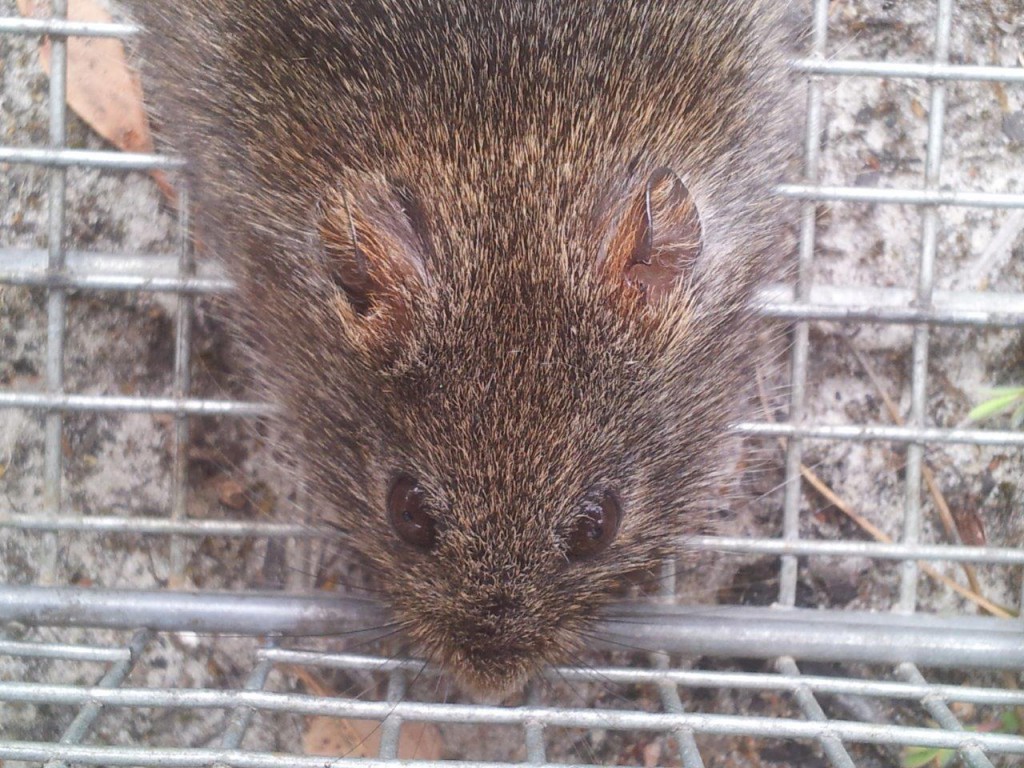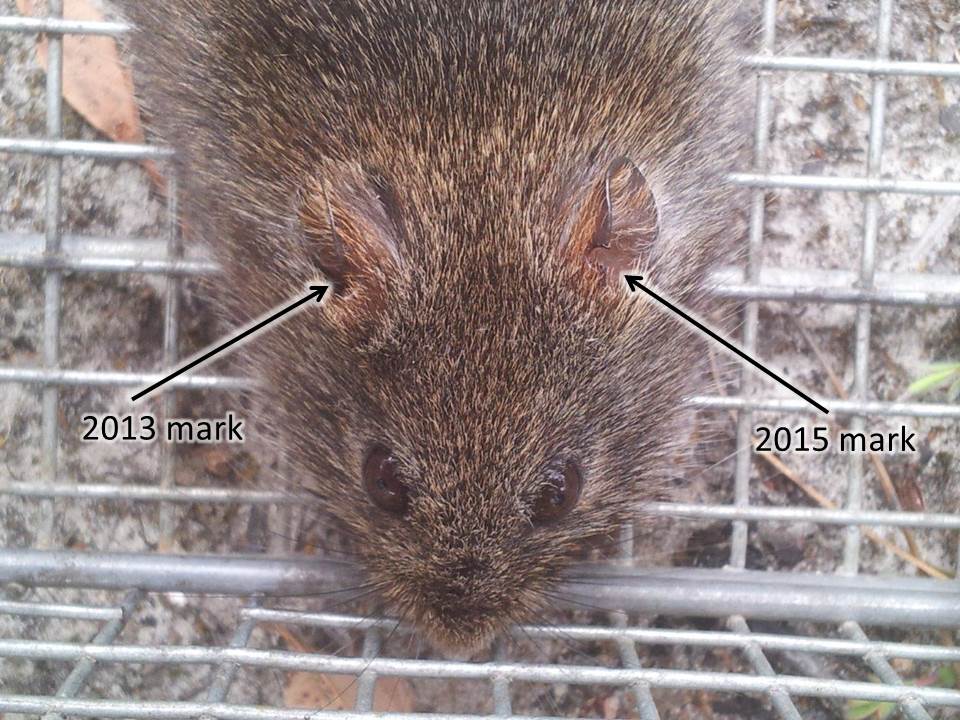Answering the riddle of the Heath Mouse photo…
Late last year, I shared a photo of a Heath Mouse, from the spring 2015 survey in the South East of SA. Here it is to refresh your memory:
Did anyone work out the unique mark on this animal?
Well, if you were looking sharp, you might have noticed the fresh mark (ear-punch) on the top of the right ear (from our view) of the animal in the image. This neat looking punch of skin was made by a small, sterilised steel punch device that enables us to uniquely mark each animal (using a combination of three different, standard marking locations on each ear). Not only does this mean we can record the movements and condition of each individual animal during a survey, but it also provides a genetic sample (that we preserve in a saline-alcohol solution) that is available for future genetic research on the population. This is actually really important because for a species like the Heath Mouse, which occurs in fragmented patches of bushland in the South East of SA, genetic isolation of populations is something we need to be thinking about, and may need to address in the future if we want to keep them in SA.
So that is how the unique identification method is meant to work. But that is not the end of this story!
Did anyone spot the larger (grown out), healed-over mark on the top of the other (left) ear? If you did – well done! – because this is something I overlooked in the field when this animal was first recaptured last year. A big mistake, (yes, it is easy to make them, even after doing this for a long time!), but let me explain how this happened…
This animal is an adult female that was first captured in 2013, in the area of Dry Creek Native Forest Reserve that was burned later that spring, literally within days of the survey being completed. As a result, when we resurveyed this area in 2015, our expectations were pretty low, thinking that the heath mice in the area at the time of the fire would have been killed (or probably starved afterwards due to lack of resources, given the barren condition of the site after the fire). Hence, we thought that any animals found in the area would indicate evidence of early migration back into the recovering habitat.
After thinking we had a great result to show recolonisation, this apparent ‘migrant’ animal was captured, bagged up, quickly measured, weighed and marked (without looking too closely at the other ear) and released, never giving a second thought to the fact that we may have survivors hanging on out there.
Luckily, when the animal was recaptured twice over subsequent days, in the process of more thoroughly checking animals for markings (because I now knew I had a marked animal out there), I discovered my mistake.
The reason for sharing this tale is because it revealed that this adult female is a real survivor – an even more amazing tale of somehow surviving the burn and its aftermath – and in the end was the only Heath Mouse that was found in Dry Creek NFR during the survey last year. A pretty special animal!
Plus I learned a valuable lesson too, that has wider applicability in life – about the value of keeping an open mind, and being prepared for your assumptions to be turned upside down, when you least expect it!



